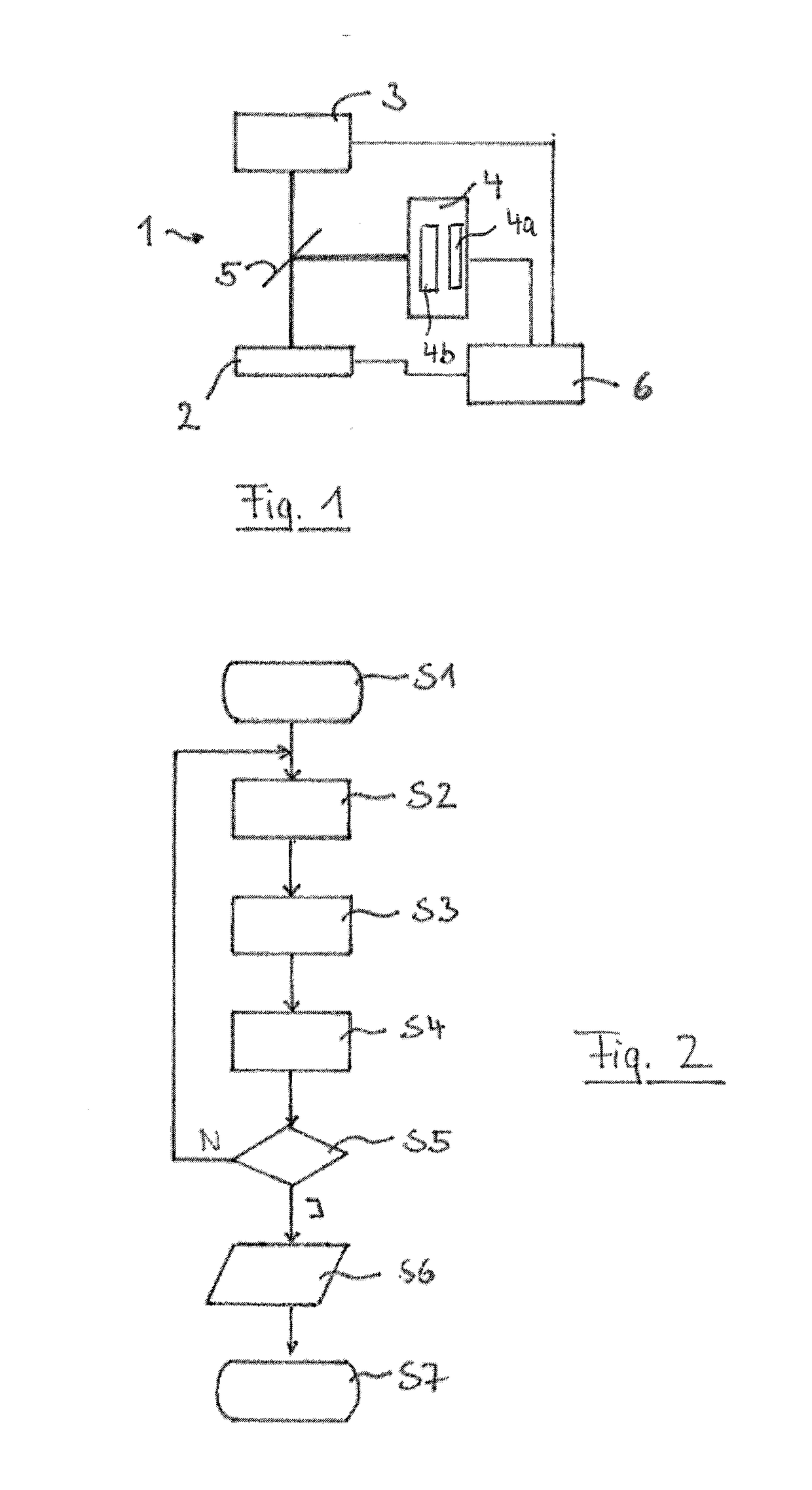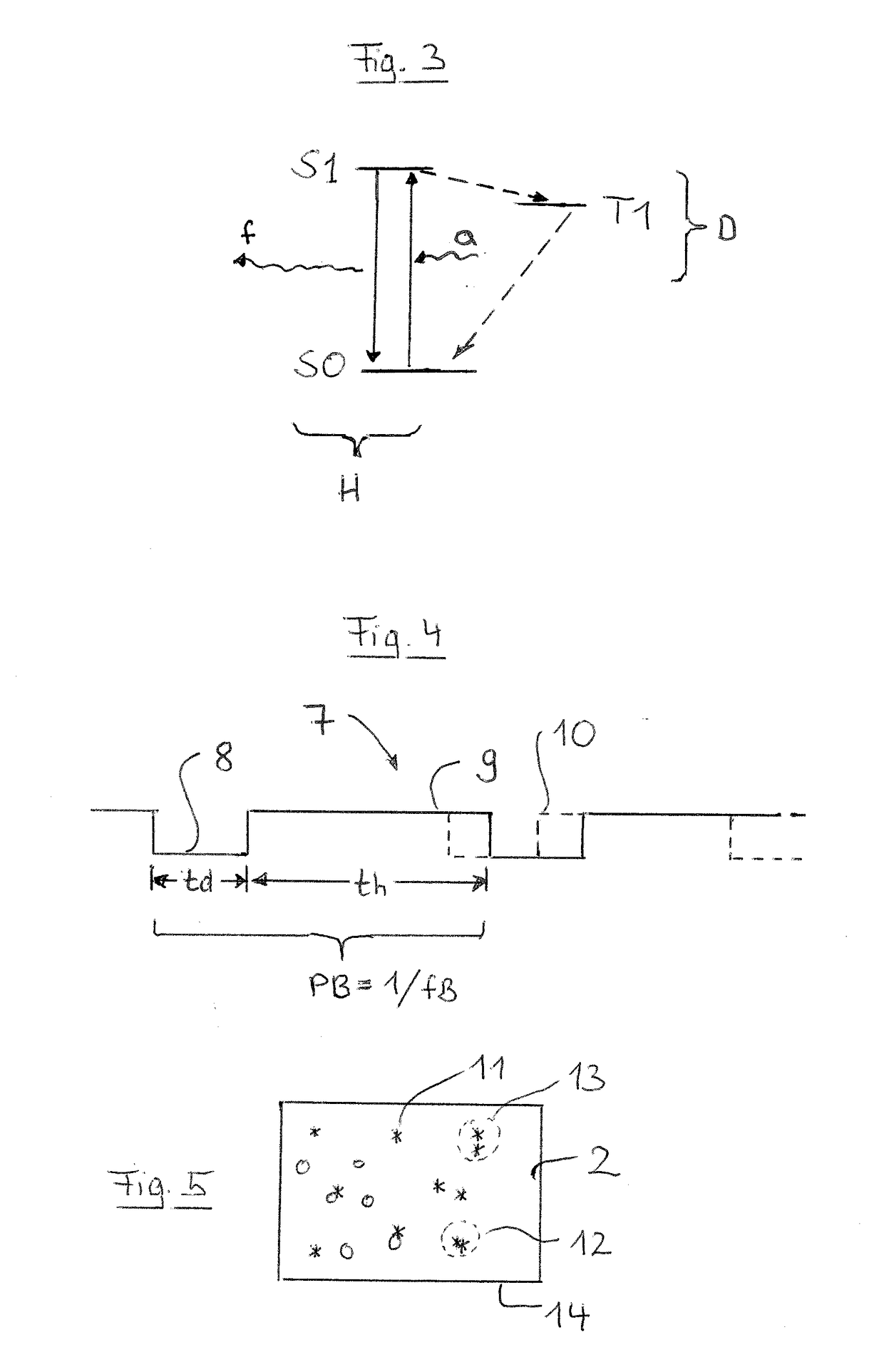Fast high-resolution microscopy method and fast high-resolution microscope
a high-resolution microscopy and high-resolution technology, applied in the field of high-speed high-resolution localization microscopy of specimens, can solve the problems of not being very to not at all suitable for living specimens, requiring many individual images of specimens, and requiring too much at the expense of localization accuracy, so as to improve the ratio of signal to background radiation, reduce the stress of specimen photos, and fast refresh rate
- Summary
- Abstract
- Description
- Claims
- Application Information
AI Technical Summary
Benefits of technology
Problems solved by technology
Method used
Image
Examples
Embodiment Construction
[0049]FIG. 1 shows a microscope 1 schematically that images a specimen 2 in high resolution. Here, the term high resolution is used, as is usual in the state of the art, for an imaging method that has a spatial resolution that has increased beyond the diffraction limit of the imaging. The microscope 1 serves to image a specimen 2 that contains fluorescence emitters. By means of radiation from an illumination source 3, the fluorescence emitters are excited to emit fluorescent radiation. The fluorescing specimen 2 is imaged onto a widefield camera 4 via a beam splitter 5. The operation of the microscope 1 is controlled by a control device 6 that is connected to the widefield camera 4, the illumination source 3 and optionally a table on which the specimen 2 is located via corresponding control lines (not further identified) and that actuates these elements or receives data from them, in particular image data from the widefield camera 4.
[0050]In an embodiment, the widefield camera 4 com...
PUM
| Property | Measurement | Unit |
|---|---|---|
| integration time | aaaaa | aaaaa |
| integration time | aaaaa | aaaaa |
| integration time | aaaaa | aaaaa |
Abstract
Description
Claims
Application Information
 Login to View More
Login to View More - R&D
- Intellectual Property
- Life Sciences
- Materials
- Tech Scout
- Unparalleled Data Quality
- Higher Quality Content
- 60% Fewer Hallucinations
Browse by: Latest US Patents, China's latest patents, Technical Efficacy Thesaurus, Application Domain, Technology Topic, Popular Technical Reports.
© 2025 PatSnap. All rights reserved.Legal|Privacy policy|Modern Slavery Act Transparency Statement|Sitemap|About US| Contact US: help@patsnap.com



